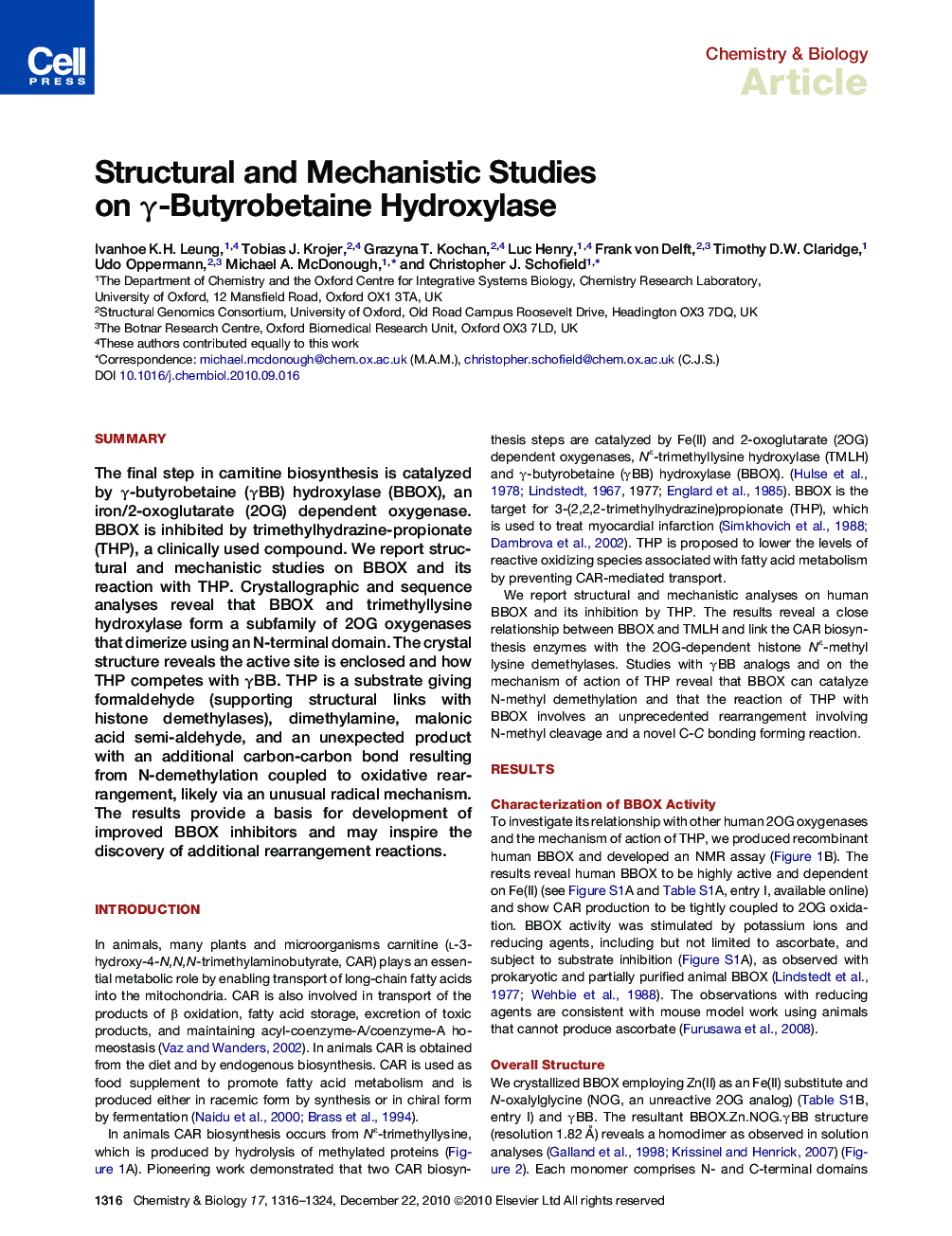| Article ID | Journal | Published Year | Pages | File Type |
|---|---|---|---|---|
| 1392193 | Chemistry & Biology | 2010 | 9 Pages |
SummaryThe final step in carnitine biosynthesis is catalyzed by γ-butyrobetaine (γBB) hydroxylase (BBOX), an iron/2-oxoglutarate (2OG) dependent oxygenase. BBOX is inhibited by trimethylhydrazine-propionate (THP), a clinically used compound. We report structural and mechanistic studies on BBOX and its reaction with THP. Crystallographic and sequence analyses reveal that BBOX and trimethyllysine hydroxylase form a subfamily of 2OG oxygenases that dimerize using an N-terminal domain. The crystal structure reveals the active site is enclosed and how THP competes with γBB. THP is a substrate giving formaldehyde (supporting structural links with histone demethylases), dimethylamine, malonic acid semi-aldehyde, and an unexpected product with an additional carbon-carbon bond resulting from N-demethylation coupled to oxidative rearrangement, likely via an unusual radical mechanism. The results provide a basis for development of improved BBOX inhibitors and may inspire the discovery of additional rearrangement reactions.
Graphical AbstractFigure optionsDownload full-size imageDownload high-quality image (414 K)Download as PowerPoint slideHighlights► Crystal structure of γ-butyrobetaine hydroxylase in complex with substrate and inhibitor ► N-terminal Zn-binding domain involved in dimerization ► The clinically used inhibitor, THP, is also a substrate for BBOX ► BBOX catalyzed rearrangement reaction
